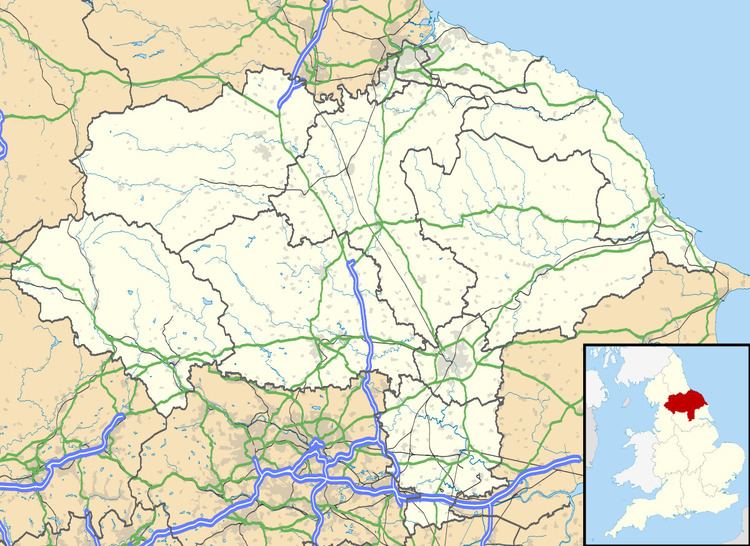Population 3,980 (2011) Sovereign state United Kingdom Postcode district BD20 Dialling code 01535 | Post town KEIGHLEY Local time Wednesday 7:25 AM District Craven | |
 | ||
Weather 6°C, Wind W at 14 km/h, 84% Humidity | ||
Flooding chaos floods yorkshire colne cowling glusburn from raw feeding lancs december 2015
Glusburn is a village, electoral ward and civil parish situated in Craven in North Yorkshire, England. Historically part of the West Riding of Yorkshire, the village is situated on the edge of the Yorkshire Dales, sits on the A6068 Kildwick to Hapton road, and is conjoined to the village of Sutton-in-Craven at the south.
Contents
- Flooding chaos floods yorkshire colne cowling glusburn from raw feeding lancs december 2015
- Map of Glusburn Sutton in Craven Keighley UK
- Glusburn
- History
- References
Map of Glusburn, Sutton-in-Craven, Keighley, UK
Glusburn is the name of the old parish, but the newer part of the village is known as Cross Hills. The parish has a population of 3,902, increasing to 3,980 at the 2011 Census.
Glusburn
History
The village most likely dates back to the 8th century. The site on which Glusburn is situated on is just above Glus Beck, which means the 'shining stream'. The site would have been rough uncultivated land, moorland and forest, with wolves, wild boar and deer around at the time.
Before 1066, most of the area was held by Earl Edwin, a Saxon nobleman. However he broke his oath of loyalty to King William I and consequently the king took the land as revenge. Therefore in the Domesday Book, the site is described as "Terra Regis" or 'Lands of the King'. Another part of the Domesday Book, folio 327r, records that in Glusebrun and Chelchis were c. 360 acres (c. 150 hectares) of ploughland of which "Gamal Bern had them; Gilbert Tison has them". For in the Harrying of the North all lands were taken from Anglo-Scandinavians and given to Norman Lords.
In 1369, John Scarborough was Lord of the Manor, and is believed to have lived at Glusburn Old Hall. In the 16th century, the estate was sold partly to John Currer of Kildwick Hall, but also to William Garforth of Steeton.
In 1379, it was recorded that 23 people in Glusburn paid a poll tax to Richard II. However in 1587, smallpox ravaged the village's population.
At the end of the 17th century, vestry rule came to Glusburn and it was put under the parish of Kildwick.
In 1700, most villagers were farmers, with spinning and weaving as a secondary income. During the latter part of the 18th century there were major improvements in the transport infrastructure. In 1773 the Leeds and Liverpool Canal was opened and then in 1786 the Keighley to Kendal turnpike road was opened. This was followed in 1823 by the Blackburn, Addingham, Cocking End Road. The improvements brought large numbers of people to the area and many more houses and workplaces were built. Six stagecoaches a day took advantage of these new roads. In 1847, Kildwick and Cross Hills railway station was opened, which had perhaps the greatest effect on the village and marked the end of the stagecoach era. During the early 19th century, trade suffered and many people became destitute. In 1850, Glusburn had around 600 inhabitants; many were engaged in textile work, with farming as a secondary income.
John William Hartley constructed a small weaving shed in Glusburn and a John Horsfall came over from Oxenhope to learn his trade with him. John Horsfall then married John William Hartley's daughter Grace in 1844 and at first became his partner and then the sole owner of the weaving shed. He was extremely successful and his business grew rapidly. He required more workers, which meant that additional terraced housing was built. The main building of the mill dates from this time, which at its peak employed 500 people.
John Horsfall went on to build Hayfield Hall, as well as the Institute and a park across the road from the mill. Hayfield Hall, built prior to 1885, was a solid ten bedroom country house with a garden and a lake, the latter serving as a dam for the mill. John Cousin Horsfall was created 1st Baronet of Hayfield in 1909 and John Donald Horsfall, the 2nd Baronet, was High Sheriff of Yorkshire for 1927–28. After standing empty for some time, the hall was sold for £1,000 in 1938. During the Second World War it was used as an army barracks, but was demolished at the end of the war and the site used for a mill extension.
In 1905, Ezra Laycock bought the first bus in the area, initially to help people from Cowling and Glusburn to get to Kildwick and Cross Hills railway station. In 1924, the routes were taken over by Yorkshire Road Car Company and the Burnley, Colne & Nelson Joint Transport.
In the 1950s, there was a shortage of workers in the area, consequently the Horsfall family had to recruit girls from Malta. A hostel was built to house them. In 1972, the mill was bought by Sirdar Wools Ltd and operated until 1995; it was mainly concerned with dyeing knitting wools. But in 1995 it was closed down again until it was bought in 1997-98 by Ellison's Holdings plc, which produced circlips, rings and fasteners for the automotive industry. After that it was bought by an American company TransTechnology (GB) Ltd. Now it is owned by Cirteq (GB) Ltd. Currently the number of employees is increasing from 300+, including many Poles, and the mill is expanding.
